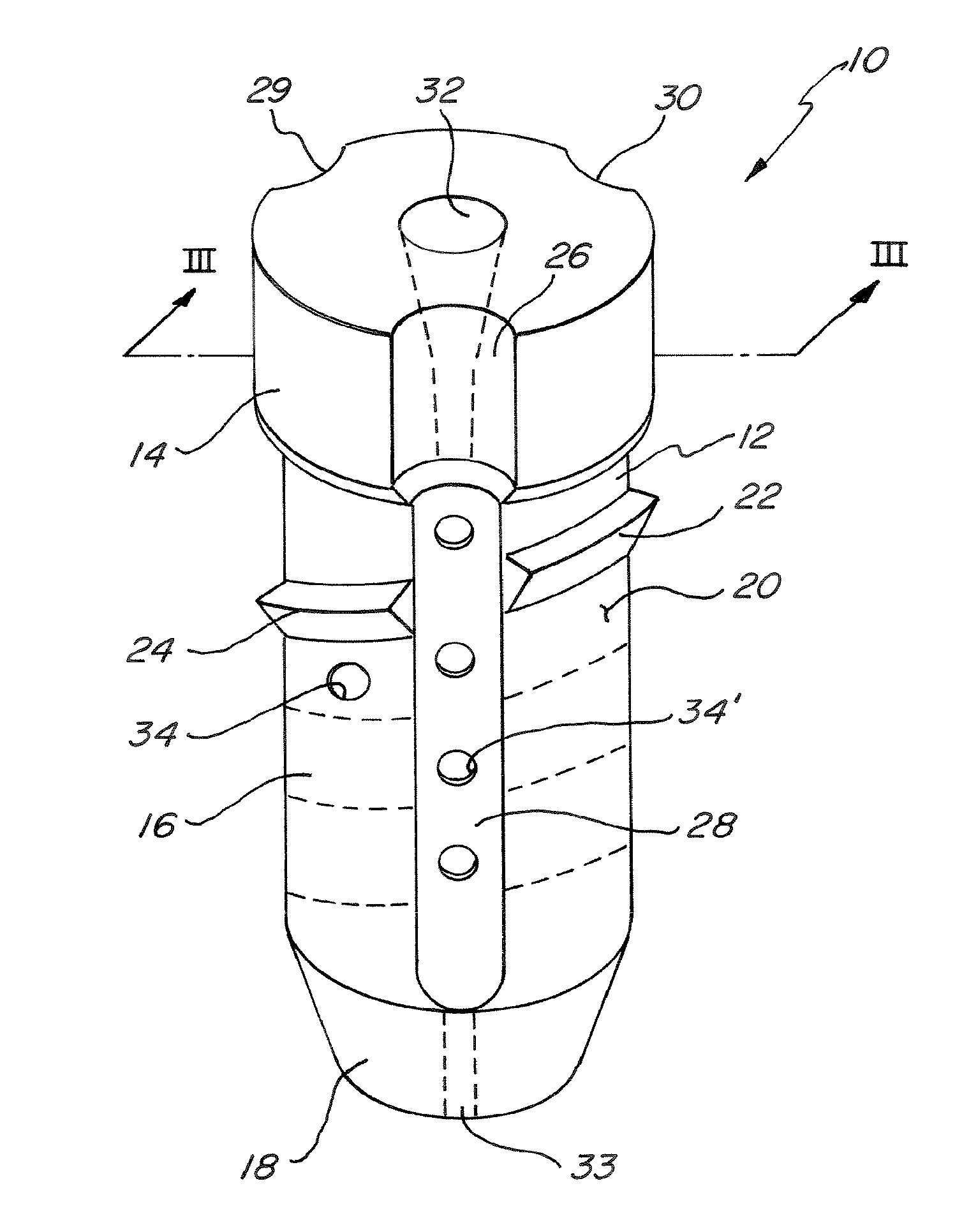Biodegradable interference screw and tool for attaching a transplant to a bone
a biodegradable interference screw and tool technology, applied in the field of screws, can solve problems such as inability to anchor, and achieve the effects of avoiding radial spreading of long and thin drive elements, facilitating operator's work, and avoiding inability to rota
- Summary
- Abstract
- Description
- Claims
- Application Information
AI Technical Summary
Benefits of technology
Problems solved by technology
Method used
Image
Examples
Embodiment Construction
[0040]A screw shown in FIG. 1 is indicated with the numeral 10 and is configured as an interference screw. The interference screw 10 comprises an interference screw body 12 having a head portion 14 and a following shaft portion 16, which ends in a tapered penetration end 18. The interference screw 10 can be made of metal, for example titanium, however is most preferably made of biodegradable material. Examples of biodegradable materials are polycaprolactone, poly(L-lactide), polyglycol, poly(D,L-lactide), poly(D,L-lactide-co-glycol), poly(D,L-lactide-cocaptrolactone), polydioxanone, copolyoxalates and polycarbonates, for example, polyglycol-co-trimethylenecarbonate and poly(glutamine-co-leucine).
[0041]The interference screw 10 is provided with an outer threading 22 in the region of the shaft portion 16 at its outer surface 20. Only one winding 24 of the threading 22 is shown in FIG. 1, the other windings only being indicated with dashed lines. A first recess 26 in the form of an axi...
PUM
 Login to View More
Login to View More Abstract
Description
Claims
Application Information
 Login to View More
Login to View More - R&D
- Intellectual Property
- Life Sciences
- Materials
- Tech Scout
- Unparalleled Data Quality
- Higher Quality Content
- 60% Fewer Hallucinations
Browse by: Latest US Patents, China's latest patents, Technical Efficacy Thesaurus, Application Domain, Technology Topic, Popular Technical Reports.
© 2025 PatSnap. All rights reserved.Legal|Privacy policy|Modern Slavery Act Transparency Statement|Sitemap|About US| Contact US: help@patsnap.com



